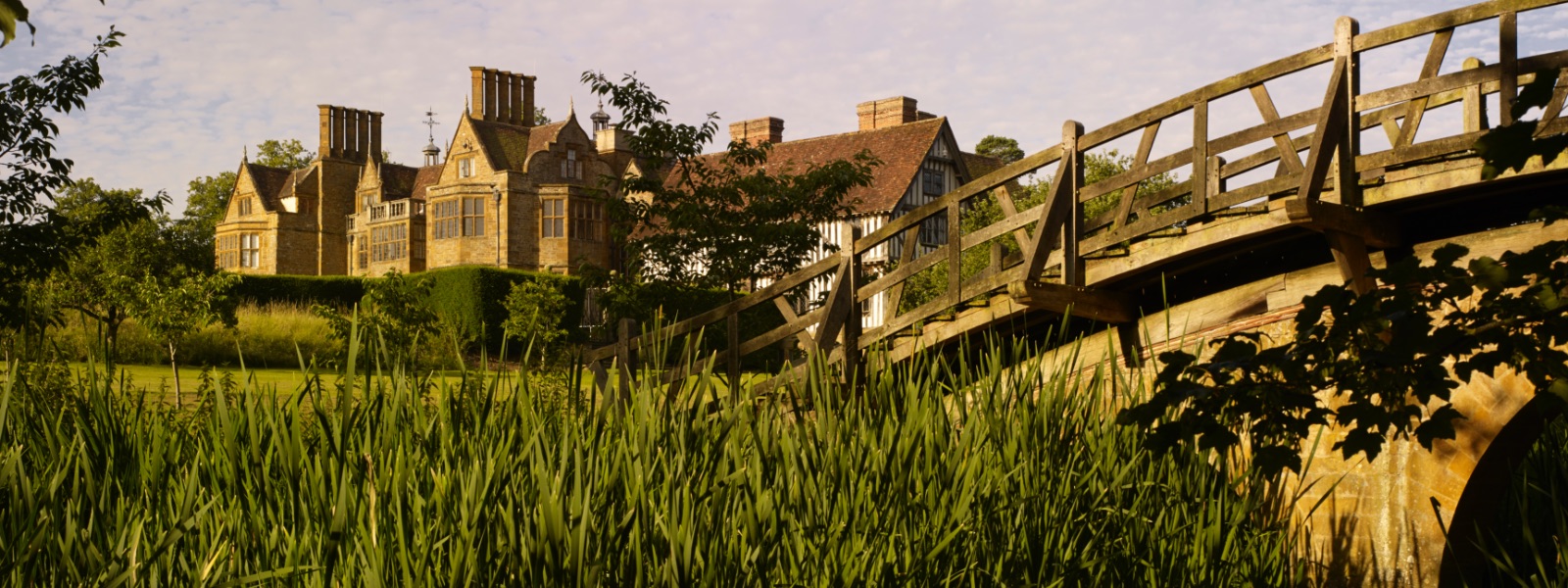Ashby Manor House is one of the most intriguing and historic houses in England. From 1375 to 1611 it was the home of the Catesby family. In 1605 Robert Catesby and his fellow conspirators, including Guy Fawkes, gathered in the Manor’s gatehouse. There they conspired to assassinate King James I and his courtiers by blowing up the Houses of Parliament in one of England’s most notorious acts of treason, the Gunpowder Plot.
The Manor House comprises diverse architectural periods and styles, masterfully integrated in the early 20th century by renowned architect Sir Edwin Lutyens under the patronage of industrialist Ivor Guest, 1st Viscount Wimborne. Within easy reach of London, the Manor House is conveniently located for many local attractions such as Silverstone motor racing circuit and the historic town of Stratford-upon-Avon.
1068
Following the Norman Conquest the Ashby Manor House (along with 99 other manors) is gifted to Hugues de Grandmesnil, Sheriff of Leicester, by William I of England.
1086
The Manor is mentioned in the Domesday Book.
1199-1375
The Cranford family holds the lordship of the Manor of Ashby St Ledgers.
1375-1611
Emma Cranford marries John de Catesby of Ladbroke, Warwickshire. The Catesby family retains the Manor for 236 years.
1485
Sir William Catesby, councillor to Richard III and Chancellor of the Exchequer is captured at the Battle of Bosworth Field. He is subsequently executed at Leicester and his estates, including Ashby St Ledgers, are temporarily confiscated by Henry VII.
1605
The year of the Gunpowder Plot. Catesby and fellow conspirators congregate in the Plot Room to conspire against King James I. They gather away from the house itself, so as not to implicate by association Catesby’s mother, who is living in the Manor. On November 5th the plot fails and Catesby and entourage briefly return to Ashby St Ledgers in flight. Catesby, again not wanting to implicate his mother, is said to have waved to his mother at the gate before riding onwards to Holbeche House, Staffordshire where on November 8th he makes his last stand before being shot by his pursuers.
1611
Sir William Irwing obtains the grant of the Manor from King James I following the death of Catesby’s mother, the King having permitted her to reside at the Manor until her death.
1612-1634
Bryan I’Anson, High Sheriff of Buckinghamshire and draper of London, purchases the Manor from Sir William Irwing and lives in it until his death.
1652
John I’Anson oversees major modifications to the south elevation of the Manor.
1657
John I’Anson dies
1703
Joseph Ashley, draper of London, purchases the Manor from the I’Anson family. Joseph Ashley’s son, also named Joseph, becomes High Sheriff of Northamptonshire.
1787
Sir William Senhouse marries Joseph Ashley’s daughter Mary.
1903
Ivor Guest, 1st Viscount Wimborne purchases the Manor from the Senhouse family.
1904-1938
Viscount Wimborne and Sir Edwin Lutyens collaborate to extensively modify and add to the Manor. Many of the notable features of the house today are conceived including the Stone Hall, Luyens Hall and Dining Room, Music Room and Canal Garden.
1908
The Ipswich Wing is exhibited at the Franco British Exhibition in London and purchased by Viscount Wimborne. The Ipswich Wing originally stood on the corner of Carr Street and Cox Lane in Ipswich and was transported for exhibition in White City, London in 1908 and then on to Ashby St Ledgers by steam engine.
1976
The Manor House and Ashby St Ledgers Estate are sold by Viscount Wimborne's grandson, 3rd Viscount Wimborne to British Airways' Pension Fund, when he moves to France.
1998
Ivor Guest, 4th Viscount Wimborne buys The Manor House at auction and embarks on an extensive, faithful and detailed restoration, returning the house to former glories.
2015
The Manor remains within the Guest family, having been purchased by Viscount Wimborne's cousin.
2026
The Brody Nuptials!
The Brody Nuptials!
